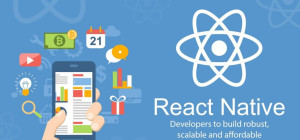In this section, we will provide an overview of Kubernetes installation and explain their architecture. We will discuss the key concepts and components of Kubernetes, such as pods, nodes, deployments, services, and namespaces.
Kubernetes installation is an open-source container orchestration platform that automates the deployment, scaling, and management of containerized applications. It provides a framework for running and managing containers across a cluster of machines. Understanding the Kubernetes architecture is essential to effectively utilizing its capabilities.
Kubernetes Architecture
The Kubernetes architecture consists of various components that work together to provide a scalable and resilient platform for container orchestration. The main components include:
- Master Node: The master node is responsible for managing the cluster and making global decisions. It consists of several components, including the API server, controller manager, etc., and scheduler.
- Worker Nodes: Worker nodes are responsible for running the containers and executing the tasks assigned by the master node. Each worker node runs the Kubernetes runtime environment and communicates with the master node.
- Pods: Pods are the smallest deployable units in Kubernetes. They encapsulate one or more containers and share resources within the same pod. Pods are scheduled on worker nodes and can be horizontally scaled.
- Deployments: Deployments provide a declarative way to manage application deployments and updates. They ensure that a desired number of replicas are running and can roll out new versions without downtime.
- Services: Services enable communication between different parts of an application within the cluster. They provide a stable network endpoint for accessing pods and can load balance traffic across multiple replicas.
- Namespaces: Namespaces provide a way to divide a Kubernetes cluster into multiple virtual clusters. They allow for better resource allocation, access control, and isolation.

Learning Kubernetes
In this section, we will discuss various resources and approaches to learning Kubernetes. Whether you’re a beginner or an experienced practitioner, continuous learning is essential to keeping up with the rapidly evolving Kubernetes ecosystem.
Online Courses and Tutorials
If you prefer structured learning Kubernetes, there are numerous online courses and tutorials available that cover Kubernetes from beginner to advanced levels. These courses cover all the essential topics related to Kubernetes installation, including Kubernetes architecture, installation, and cluster management.
Documentation and Official Guides
The official Kubernetes documentation is an excellent resource for understanding Kubernetes in-depth. It provides detailed explanations of concepts, components, and features. The documentation also includes step-by-step guides on various topics, such as cluster installation, configuration, and application deployment.
Community Forums and Discussion Groups
Engaging with the Kubernetes community can be highly beneficial for learning and problem-solving. There are several forums and discussion groups where you can ask questions, share experiences, and learn from others’ expertise. The official Kubernetes Slack channel and Reddit’s r/kubernetes are popular platforms for community interaction.
Hands-on Practice
Learning Kubernetes involves hands-on practice with real-world scenarios. Setting up a local development environment using tools like Minikube or Docker Desktop allows you to experiment with Kubernetes without affecting production systems. Additionally, creating your own Kubernetes cluster using cloud-based solutions like Google Kubernetes Engine (GKE) or Amazon Elastic Kubernetes Service (EKS) enables you to experience managing a production-ready environment.
Kubernetes Cluster Installation
In this section, we will explore the process of installing a Kubernetes cluster. We will cover different installation methods based on your requirements and infrastructure.
Local Development Environment
For learning Kubernetes purposes or local development, setting up a single-node cluster using Minikube or Docker Desktop is a convenient option. These tools provide a lightweight Kubernetes environment that can run on your local machine.
To install Minikube, follow these steps:
- Install a hypervisor, like VirtualBox or HyperKit.
- Install Minikube using the package manager specific to your operating system.
- Start Minikube to create a local cluster.
Docker Desktop also provides an easy-to-install option for running Kubernetes locally. Enable the Kubernetes feature in Docker Desktop settings to start a local cluster.
Cloud-based Solutions
For production environments or multi-node clusters, cloud-based solutions like GKE or EKS offer scalable and managed Kubernetes clusters.
To install a Kubernetes cluster on GKE:
- Create a Google Cloud Platform (GCP) account if you don’t have one.
- Set up a project on GCP.
- Enable the Kubernetes Engine API.
- Use the GCP console or command-line tools to create a cluster.
Similarly, AWS provides EKS as its managed Kubernetes service. To install a cluster on EKS:
- Create an AWS account if you don’t have one.
- Set up an IAM role with the necessary permissions.
- Use the AWS Management Console or AWS CLI to create an EKS cluster.
Conclusion
In conclusion, mastering Kubernetes is essential for effective container orchestration in modern application development and deployment. Understanding its architecture, learning from reliable resources, and gaining hands-on experience with cluster installation are vital steps on your journey to learning Kubernetes.
By utilizing online courses, official documentation, community forums, and practical experimentation, you can gain proficiency in deploying and managing applications with Kubernetes. Start your Kubernetes learning journey today and unlock the full potential of container orchestration with Kubernetes installation!




![Top CEOs under 30-The Young Guns Of Technology [Infographic]](https://lerablog.org/wp-content/plugins/wp-thumbie/timthumb.php?src=http://lerablog.org/wp-content/uploads/2015/03/the-young-guns-of-technology.jpg&w=300&h=140&zc=1)


